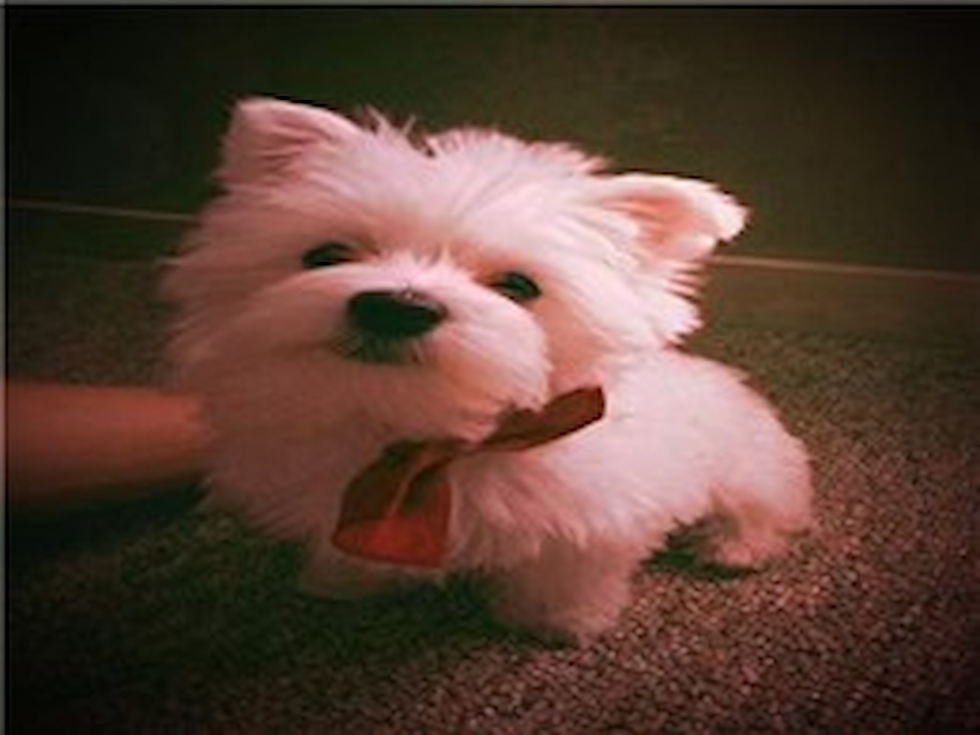Maltese Breed Information


Graceful, elegant, and with an expression that could melt hearts, the Maltese puppy is a true conqueror. Maltese puppies are sweet little angels that love to bring a smile to every face they see. They are excellent at cheering up, entertaining is what they do best, and cute tricks are their biggest ally. Smart, eager to please, and passionate about learning, the Maltese puppies are as easy to train as they are to love. These puppies make quick friends with others and are great at making their family feel cherished.
Characteristics
- The Maltese dog is one of the most ancient dog breeds in Dogdom
- Also known as The Ancient Dog of Malta and the Melitae dog, the Maltese has its origins in the Island of Malta
- The Maltese breed received its official recognition in 1888 by the American Kennel Club, and is now part of the AKC’s Toy Group
- The Maltese dog breed is also a member of the Bichon/Barbichon family
- As a dog renowned for its many qualities as well as its winning personality traits, the Maltese has been selected to be the parent breed to various Maltese mixes
- Hypoallergenic Maltese puppies and dogs. The Maltese are a low-shedding breed that can be owned by allergy sufferers without the risk of allergic reactions
- Bright, eager to impress, and driven to please, the Maltese puppies are quite easy to train
- Friendly with children, kind, and great with other pets, the Maltese puppy is an excellent addition to any family
- Maltese puppies make perfect little companion pets for families, senior owners, single folks, and couples

Appearance
The Maltese dogs sport a gorgeous combination of elegance, playfulness, cuddliness, and confidence. These beautiful dogs always appear in a cheerful disposition, and it is highly contagious to those around them. The Maltese are happy dogs that display a warm demeanor and a friendly expression. Their tiny paws are always ready for a chase, while their gaze is filled with admiration.
As a toy-sized dog breed, the Maltese’s size can reach no more than 9-10 inches in height and 4 to 7 pounds in weight. Smaller versions of the Maltese breed, like the Toy Maltese and the Teacup Maltese will grow to less than 9 inches tall. These cute, toy-sized dogs have a sturdy build, and despite their delicate appearance, are quite hardy. They have a beautiful round face, small dark eyes, a medium-length muzzle, floppy ears, and a puffy, curled, and upwards tail. The Maltese hair is long, straight, and smooth, with the only Maltese colors being shades of white.
Photos
Temperament
Maltese puppies are little rays of sunshine from the day they are born. Their demeanor, personality, and nature all point to a happy-go-lucky dog that loves life and everyone in it. Maltese dogs are famously known for their balanced temperament. They are kind dogs that display gentleness around small children, and spunkiness with playfulness around older children, dogs, and other pets. Maltese dogs and small children make wonderful friends as they are equally passionate about discovering the world around them.
Their curiosity, playful nature, and lack of jumpiness or negative behavior make these dogs one of the best dog breeds for small children. If you’re a family with older children and you’re looking to reserve a Maltese puppy, you are in for a wonderful surprise as these dogs have a comedian’s instincts that will shine through in every trick performance. Their knack for tricks and love for entertainment are renowned. Ever since their circus days during the time of kings, Maltese puppies and Maltese dogs have always been fans of cheering and entertaining crowds.
Care
Maltese Grooming
As a non-shedding dog breed, the Maltese has low-to-moderate grooming requirements. Ideally, you should brush your dog’s hair at least twice every week to help prevent mats and tangles. If you opt for a Maltese puppy cut or a Maltese teddy bear cut, brushing can be done once a week. If you prefer to keep your Maltese’s hair long, a brush every two days will be necessary to keep it smooth and soft. Bathing should only be done with dog shampoo and no later than every 4 to six weeks. You should also clip your dog’s nails after every bath (that is when they are softer and easier to manage) to avoid discomfort from overgrown nails. Like all dogs, Maltese dogs can be prone to dental problems, and it is recommended to brush their teeth on a weekly basis. Their ears, eyes, and face should also be cleaned regularly. It is beneficial to begin grooming your Maltese puppy very early on to give it time to get accustomed to being handled and comfortable around grooming tools.
Maltese Exercise Needs
As a small dog breed, the Maltese doesn’t have very high exercise needs. Two daily walks will suffice to keep your little dog in great shape and happy. Maltese dogs also love fetching, ball chasing, and other dog games, so fun indoor activities will be highly beneficial for them. Treat puzzles and Kong-type toys will also help keep their minds entertained.
Maltese Health
There are very few ailments that can affect Maltese dogs, as they are a very healthy and long-lived breed. Some conditions they can be prone to are mild dental issues, cataracts, white dog shaker syndrome, and allergies.
Maltese Life Span
Maltese dogs have a long lifespan that is on average 14 to 16 years. Although quite a few live to be 18 and over, the Maltese life expectancy is officially 15 years.
Maltese Training
Maltese puppies are very responsive to training. They are highly intelligent, attentive, and immensely passionate about pleasing their trainer/owner. With Maltese puppies, training should go smoothly and effortless. These adorable white puppies love treat rewards, praise, and attention most of all. When teaching them basic commands, it is recommended to take on a gentle approach and to provide their favorite treat or toy as motivation. Some puppies can turn stubborn if they are overly spoiled, but most Maltese puppies will be glad to learn whatever they are taught. They are also fond of tricks and challenges, so it is always best to have some advanced training lessons prepared.
When it comes to leash training and socialization, your Maltese puppy will do most of the work on its own. Maltese puppies and adults are among the friendliest dogs in Dogdom. They enjoy meeting new people and interacting with other dogs and pets just as much as they love their daily walks. It is always beneficial to introduce young puppies to new people and distractions indoors before they are taken on their first walk to ensure they are neither shy nor scared of their surroundings.
History
The Maltese dogs are said to have first appeared in the Island of Malta near the coast of Italy. Although some historical documents place them in Malta several centuries ago, there are also representations on statues of Maltese-type dogs dating back to ancient Egyptian times. Throughout history, Maltese dogs have been depicted in art, writing, sculptures, and more notably in French poetry and ancient Roman drawings. As they journeyed their way through the world, the Maltese dogs found admiration at every corner. English monarchs counted the Maltese puppies as their favorite companion pets, while the people of France adored the Maltese dogs for their remarkable performances within the circus.
Once the white Maltese puppies arrived in the United States, their popularity grew to its peak. They were quick to receive their official recognition from the American Kennel Club in 1888, and even quicker to become one of the most popular dogs in the country. For well over a century, the Maltese puppies remained at the top in popularity charts worldwide. The Maltese breed is also the parent breed of quite a few Maltese mixes and designer dogs. Among the most popular Maltese mix breeds are:
- Maltipom – Maltese Pomeranian mix
- Maltipoo – Maltese Poodle mix
- Mal-Shi – Maltese Shih Tzu mix
- Malchi – Maltese Chihuahua mix
- Morkie – Maltese Yorkshire Terrier mix










